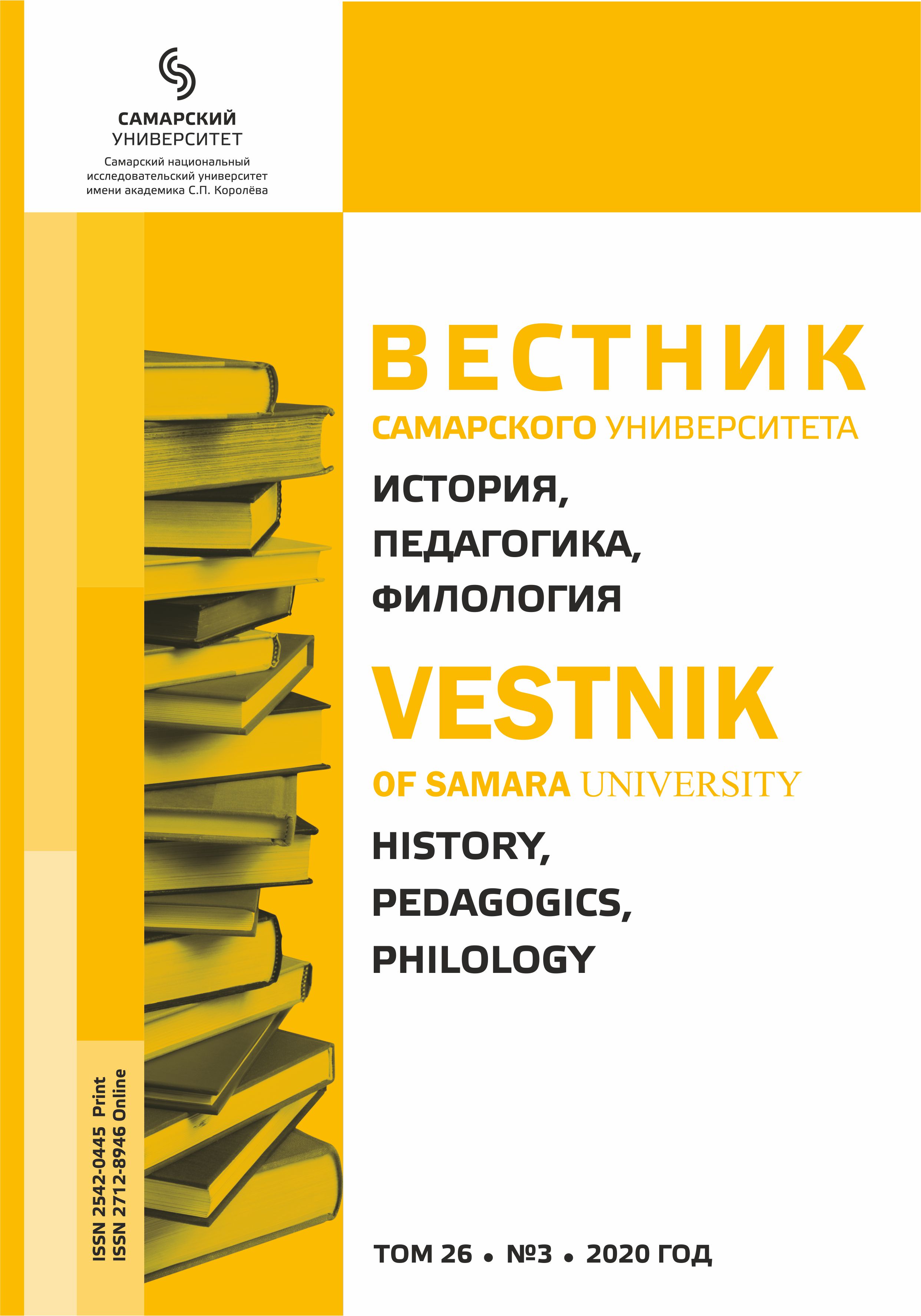‘Thare is na leid on life of lordship hym like’: языковые средства изображения короля Артура в поэме «Голагр и Гавейн»
- Авторы: Столярова А.Г.1
-
Учреждения:
- Московский государственный университет имени М.В. Ломоносова, г. Москва, Российская Федерация
- Выпуск: Том 26, № 3 (2020)
- Страницы: 108-113
- Раздел: Статьи
- URL: https://journals.ssau.ru/hpp/article/view/8194
- DOI: https://doi.org/10.18287/2542-0445-2020-26-3-108-113
- ID: 8194
Цитировать
Полный текст
Аннотация
В исследованиях последних лет неоднократно отмечалось, что король Артур в памятниках шотландской словесности – фигура неоднозначная: с одной стороны, он благородный и отважный воитель, с другой – надменный захватчик, стремящийся овладеть всем миром. Противоречивость образа легендарного короля в шотландских памятниках во многом обусловлена историко-политическими различиями и их рефлексами в мифологии Англии и Шотландии: в последней в эпоху позднего Средневековья сложилась своя концепция легендарной истории, а миф об Артуре как законном властителе всей Британии воспринимался в том числе и как угроза собственной национальной независимости. Настоящая статья посвящена изучению языковых средств создания образа Артура в одном из двух сохранившихся шотландских романов артуровского цикла – в романе «Голагр и Гавейн» анонимного автора, созданном в XV в. «Голагр и Гавейн» – памятник, продолжающий традиции возрождения английского аллитерационного стиха в Шотландии на местном языке скотс; язык и стиль поэмы характеризуется использованием таких традиционных средств, как субстантивные эпитеты, формулы, повторяющиеся атрибутивные комплексы с аллитерирующими между собой компонентами. Исследование показало, что в данной поэме легендарный король изображен великодушным и справедливым, практически идеальным правителем, возвращающим Голагру (и Шотландии в его лице) отнятую было независимость. Величие и благородство короля неоднократно подчеркивается в тексте поэмы при помощи традиционных средств аллитерационной поэзии: качества, отраженные в хвалебных эпитетах, повторяются раз за разом, с многочисленными вариациями, в реализациях поэтических формул и закрепляются в субстантивированных прилагательных.
Об авторах
А. Г. Столярова
Московский государственный университет имени М.В. Ломоносова, г. Москва, Российская Федерация
Автор, ответственный за переписку.
Email: morenov@ssau.ru
ORCID iD: 0000-0002-7045-4310
аспирантка кафедры германской и кельтской филологии, филологический факультет, Московский государственный университет имени М.В. Ломоносова
Список литературы
- Монмутский 1984 – Гальфрид Монмутский. История бриттов. Жизнь Мерлина / отв. ред. А.Д. Михайлов. Москва: Наука, 1984. 286 с. URL: https://www.litmir.me/br/?b=175507&p=1.
- Матюшина 1994 – Матюшина И.Г. Возрождение аллитерационной поэзии в позднесредневековой Англии // Проблемы жанра в литературе Средневековья, 1994, с. 175–228. URL: https://norse.ulver.com/articles/matyushina/alliteration.html (дата обращения: 01.05.2020); https://www.elibrary.ru/item.asp?id=28958611.
- Фомушкина 2012 – Фомушкина О.В. Аллитерация как средство усиления семантического единства (на материале древне- и среднеанглийских поэтических текстов // Армия и общество. 2012. № 3 (31). С. 127–130. URL: https://www.elibrary.ru/item.asp?id=20183426.
- Alexander 1975 – Alexander F. Late medieval Scottish attitudes to the figure of King Arthur: A reassessment // Anglia: Zeitschrift fur englische Philologie. 1975. № 93. S. 17–34.
- Boviard-Abbo 2014 – Boviard-Abbo K.L. “Reirdit on ane riche roche beside aneriveir”: Martial Landscape and James IV of Scotland in The Knightly Tale of Golagros and Gawane // Neophilologus. 2014. № 98 (4). P. 675–688. doi: 10.1007/s11061-014-9377-5.
- Clark 1950 – Clark J.W. The “Gawain-poet” and the Substantival Adjective // The Journal of English and Germanic Philology. 1950. Vol. 49.1. P. 60–66. URL: https://www.jstor.org/stable/27713112.
- Oakden 1968 – Oakden J.P. Alliterative Poetry in Middle English. Тhe Dialectal and Metrical Survey. Vol. I. Archon Books, 1968. 272 p. Vol. II. Archon Books, 1968. 401 p.
- Purdie 2005 – Purdie R. The search for Scottishness in Golagros and Gawane // The Scots and medieval Arthurian legend. Cambridge: D.S. Brewer, 2005. P. 95–107. URL: https://www.jstor.org/stable/10.7722/j.ctt9qdh72.
- Purdie, Royan 2005 – Purdie R., Royan N. Introduction: Tartan Arthur? // The Scots and medieval Arthurian legend. Cambridge: D.S. Brewer, 2005. P. 1–7. URL: https://www.jstor.org/stable/10.7722/j.ctt9qdh72.
- Hahn 1995 – Hahn Th. (Ed.) Sir Gawain: Eleven Romances and Tales / Ed. by Th. Hahn. Kalamazoo: TEAMS Middle English Texts Series, 1995. 439 p. URL: https://d.lib.rochester.edu/teams/publication/hahn-sir-gawain.
- Turville-Petre 1977 – Turville-Petre Th. The Alliterative Revival. Cambridge: D.S. Brewer & Rowman & Littlefield, 1977. 152 p. URL: https://archive.org/details/alliterativerevi0000turv.
- Wood 2005 – Wood J. Where does Britain End? The Reception of Geoffrey of Monmouth in Scotland and Wales // The Scots and medieval Arthurian legend. Cambridge: D.S. Brewer, 2005. P. 9–23. URL: https://www.jstor.org/stable/10.7722/j.ctt9qdh72.
Дополнительные файлы













